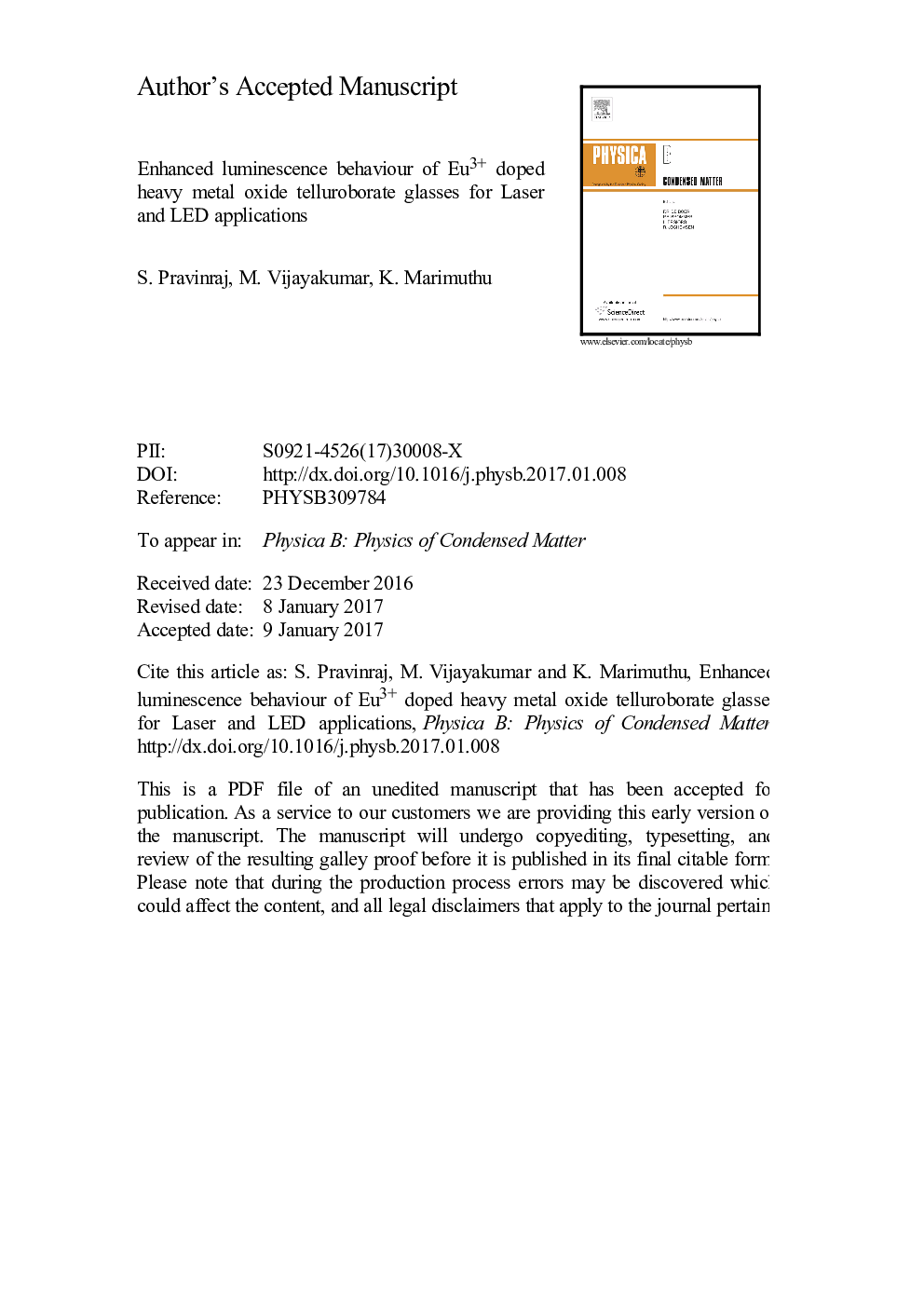| Article ID | Journal | Published Year | Pages | File Type |
|---|---|---|---|---|
| 5492147 | Physica B: Condensed Matter | 2017 | 40 Pages |
Abstract
Effect on structural and spectroscopic behaviour caused by the replacement of lead cations with the aluminium cations in the Eu3+ doped heavy metal oxide borophosphate glasses have been studied with the chemical composition (55B2O3+19.5TeO2+10K2O+(15âx)PbO+xAl2O3+0.5Eu2O3 (where x=0, 2.5, 5, 7.5, 10, 12.5 and 15 in wt%) prepared by melt quenching technique. The FTIR and Raman spectral studies reveal the presence of various fundamental vibrational units and are used to identify the phonon energy of the title glasses. The positive values of bonding parameter (δ) indicate the formation of covalent bonds between the dopant (Eu3+) and the anions (O2â). Luminescence spectra of all the titled glasses exhibit five emission bands due to the electronic transitions of the trivalent europium ions. The radiative properties such as transition probability (A), stimulated emission cross-section (ÏpE)and branching ratio (βR) of the various emission transitions of the Eu3+ ions have been estimated using Judd-Ofelt (JO) theory. The characteristic emission was identified through CIE 1931 color chromaticity diagram and McCamy's formula have been used to estimate the correlated color temperature (CCT) using (x,y) chromaticity coordinates. The luminescence decay profile pertaining to the 5D0 metastable state of the Eu3+ ions exhibits single exponential behaviour uniformly for all the titled glasses and the experimental lifetime values were obtained following the curve fitting method.
Related Topics
Physical Sciences and Engineering
Physics and Astronomy
Condensed Matter Physics
Authors
S. Pravinraj, M. Vijayakumar, K. Marimuthu,
